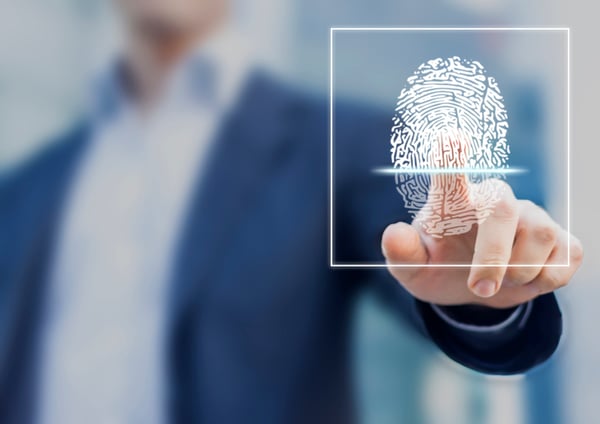
You can find access control systems everywhere, including in your own home. An access control system is essentially a system that allows you to control and define access from individuals into certain spaces, typically to a business or structure. It can even expand to controlling access to documents or control rooms. A credential is used to authenticate who is trying to gain entry. As a familiar example in our homes that we likely see on a routine basis, a common access control credential is a simple brass key that provides access through the front door. For this article though, we are going to focus specifically on the different credentials available for electronic access control systems.
PIN Number or Password
Keypads were some of the first widely used electronic access control systems. Once technology advanced further than the simple lock and key, keypads came to fruition. The access control credentials used on a keypad are known as a PIN number or password. In most cases, each employee or entrant would receive a unique password or PIN number. The number is not to be shared with anyone else in order to keep the building secure. In the event a PIN number has been compromised, a company can delete the old PIN number and issue a new one. This credential type and system tends to be the most affordable option but is also the most difficult to audit and control because it is generally not apparent that a PIN has been shared with another user.
Key Fobs, Proximity Cards, and Smart Cards
The next step towards a more sophisticated access control system, is a physical credential for each person allowed entrance into a building. A key fob, magnetic stripe card, proximity card, or smart card (typically ID badges) are all examples of physical credentials that could be used in lieu of having a keypad with a PIN number. Each type of physical credential operates a little differently.
The most basic card, the magnetic stripe card, requires the user to swipe the card in a card reader to gain access to the building. While this type of access control card works perfectly well, other access control cards, such as proximity cards and key fobs, utilize more sophisticated technology and are some of the most commonly used in access control systems today. These credentials require an individual to be within the specified proximity of the reader in order to gain access to a building or structure. Sometimes the proximity card will be in the form of an ID badge with the employee’s name and/or photo on the card. Each fob and/or card will have its own “code” or “ID”, so the database will have a history of who accessed a door and when.
The last type of card, the smart card, can also could be used as an ID badge, but is different than a proximity card for a few reasons. A smart card and the reader have to authenticate each other, whereas with a proximity card or key fob, the data is not secure and therefore no encryption validation is required. The extra step of having to authenticate each other (the reader and the card) provides an additional layer of security. Also, a smart card is difficult to hack and can store more data. The main concern businesses have with key fobs, proximity cards, and smart cards is that a person could lose the credential. However, unlike a physical brass key, a new card or fob can be quickly issued and the lost one can be removed from the system to keep unauthorized users from accessing your business and/or property.
Smartphones, Fingerprints, and Facial Recognition
Mobile technology and biometrics are believed to be the future of access control systems. Both have improved dramatically in recent years as technology has advanced. Mobile technology is particularly popular with younger generations, as they are more comfortable and adept in using their smart phones for almost everything in their daily lives. Mobile credentials also have the ability to control more than just access control, which adds to the convenience factor. It can also be less costly, because most people will already have a smartphone and a physical credential doesn’t need to be issued and paid for.
Biometrics is unique because it uses human characteristics, such as your fingerprint, as your credential. A few examples of biometrics used for access control credentials, include fingerprints, handprints, voice recognition, and facial recognition. Biometrics is known to be the most secure credential. It is also the newest access control credential in the market and is not as widely used at this moment. It is expected to become more and more popular as the biometric technology advances and the costs decrease as more access control system manufacturers implement the technology.
Learn More About Access Control Systems
It is important to ensure your assets are kept safe and secure with the latest security technology. If you’re interested in learning more about access control solutions, call the experts at Koorsen Fire & Security. Our highly trained technicians can design, install, service and maintain an access control system that fits your business’s exact needs. An access control system from Koorsen Fire & Security can keep you in control of all access to your business.



